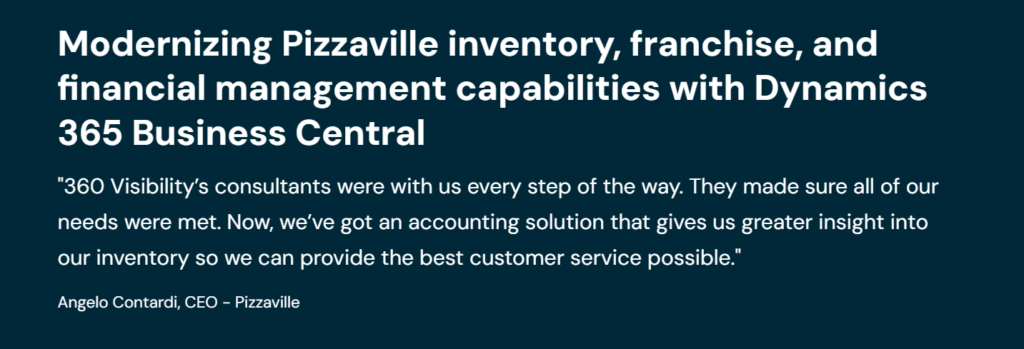The warehouse and wholesale distribution industry is facing significant hurdles driven by economic shifts, heightened competition, and constant ERP and AI technology changes. For distributors, managing these challenges while maintaining profitability is a balancing act. It can be overwhelming.
Rising customer expectations, complex orders, shrinking margins, and pressure to reduce costs all compound the difficulties they already face. Without the right ERP systems in place, distributors risk inefficiencies, lost opportunities, and diminished customer satisfaction.

Podcast – Warehouse & Distribution Transformation with Dynamics 365 Business Central
Three Key ERP Challenges for Warehouse and Wholesale Distribution Industry
- Complex Inventory Management
With an increasing variety of products and fluctuating customer demands, managing inventory is complicated. Poor oversight leads to overstocking or stockouts, both of which hurt cash flow and customer satisfaction. The wholesale distribution industry often lacks visibility into inventory, making it difficult to predict future needs and optimize stock levels.
Business Central provides real-time inventory visibility, enabling better forecasting and stock level optimization. With advanced inventory management features, it allows distributors to track inventory across multiple locations and automate replenishment processes, ensuring they have the right products at the right time. - Order Processing and Fulfillment
Customers expect fast, accurate, and seamless order fulfillment. However, processing large volumes of complex orders efficiently is challenging for many in the wholesale distribution industry. Without an integrated system to streamline the process, businesses face delays, errors, and customer dissatisfaction, which can impact long-term relationships and revenue.
Business Central streamlines the order processing workflow with integrated sales and inventory management. This ensures accurate order entry, reduces processing times, and enhances fulfillment efficiency, ultimately improving customer satisfaction and loyalty. - Cost Control and Shrinking Margins
As competition intensifies, the wholesale distribution industry is under pressure to cut costs while maintaining service quality. But shrinking margins make it difficult to absorb increased operating expenses or invest in new technology. Without careful management of costs, especially in warehousing, transportation, and labor, profitability quickly drops.
Business Central helps manage costs effectively by providing detailed insights into operating expenses across warehousing, transportation, and labor. Its powerful analytics tools enable businesses to identify cost-saving opportunities, optimize resource allocation, and make data-driven decisions that enhance profitability.
How Business Central Solves Supply Chain Issues in Wholesale Distribution Industry
Microsoft Dynamics 365 Business Central is an integrated enterprise resource planning (ERP) system that delivers real-time visibility across operations. It optimizes inventory management by delivering real-time insights into stock levels, facilitating accurate demand forecasting. With features like automated reordering and inventory optimization tools, the wholesale distribution industry can minimize overstocking and stockouts, ensuring the right products are consistently available.
Additionally, Business Central streamlines order processing by automating and simplifying the fulfillment of even complex orders, which enhances data visibility and integration across departments, reducing errors and delays to help meet customer expectations. By centralizing data on inventory, orders, and finances, Business Central enables distributors to closely monitor costs and identify potential savings, allowing them to remain competitive in a tight-margin industry while ensuring their operations are efficient and scalable.
Why 360 Visibility is Your Trusted Business Central Partner
When it comes to Microsoft Dynamics 365 Business Central implementation or optimization, businesses in the wholesale distribution industry need a partner who understands the unique challenges of their industry. This is where 360 Visibility comes in. As a leading North American tech company and Microsoft Solutions Provider, we bring expertise and a tailored approach to ensure your Business Central implementation addresses your specific needs.
- Tailored Solutions
Every wholesale distributor operates differently. 360 Visibility takes the time to understand your unique business challenges and customizes your Business Central setup accordingly. Whether you’re looking to streamline inventory management, improve order fulfillment, or better manage costs, we ensure your ERP system is tailored to your business. - End-to-End Support
From initial consultation to ongoing support, we provide comprehensive assistance at every stage of your Business Central implementation. With a focus on your long-term success, we also include training, support, and regular system assessments to ensure your ERP continues to meet evolving business needs. - Proven Track Record
We’re known for delivering successful Business Central implementations for wholesale distributors. Our deep understanding of the industry, combined with expertise in Microsoft solutions, makes us the go-to partner for any distributor looking to transform their operations and future-proof their business.
In a competitive and ever-changing industry, wholesale distributors can’t afford to fall behind. With Microsoft Dynamics 365 Business Central and the expert guidance of 360 Visibility, let’s work together to overcome your biggest challenges and achieve new levels of efficiency and profitability.



